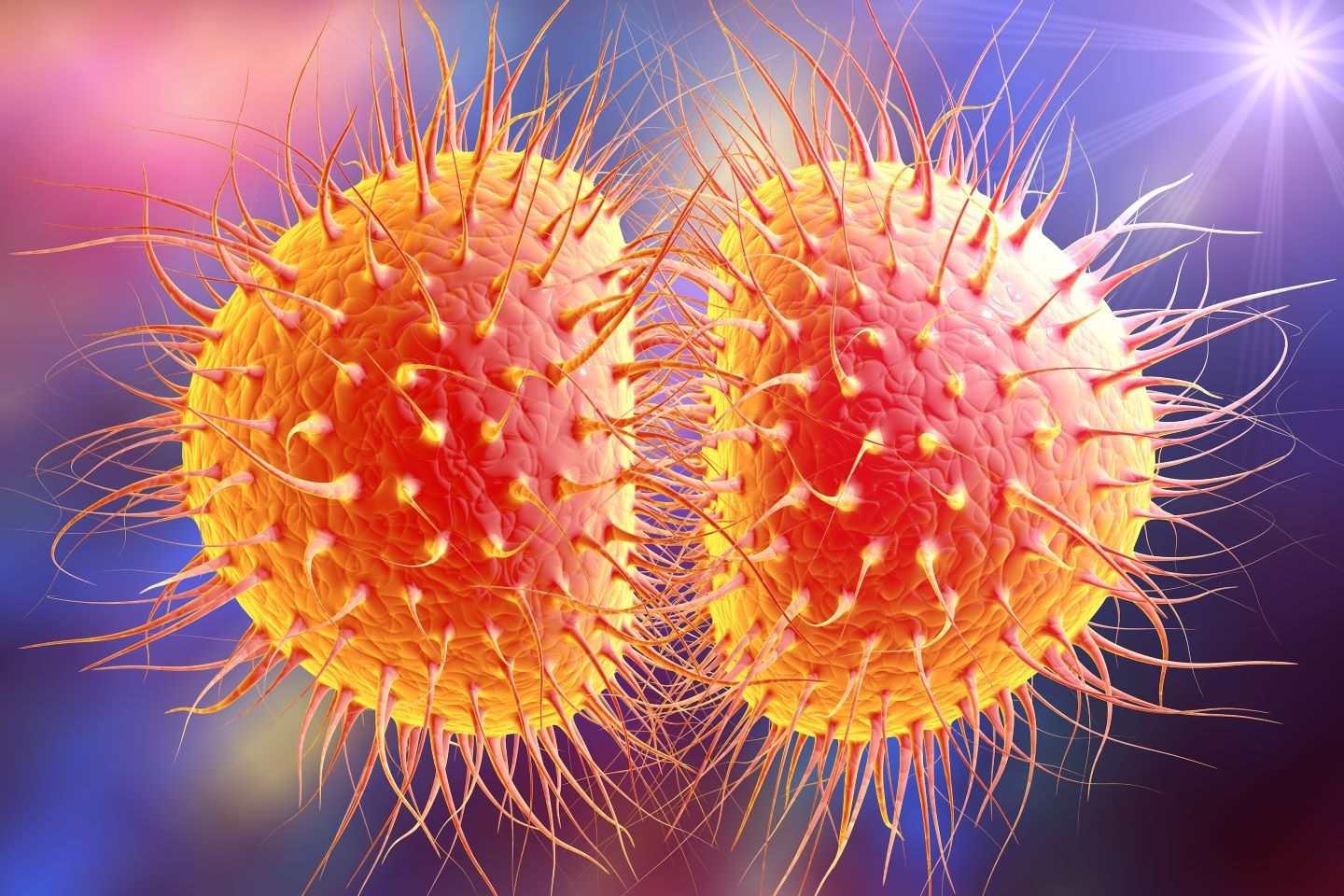At the 35th European Society of Clinical Microbiology and Infectious Diseases (ESCMID) Global conference in Vienna, Austria, Dr Janet Wilson from Leeds Teaching Hospital, UK, presented data from EAGLE-1, a Phase III randomised open-label non-inferiority study investigating oral gepotidacin for the treatment of uncomplicated urogenital gonorrhoea.
GSK’s gepotidacin is a first-in-class, bactericidal, triazaacenaphthylene antibacterial that inhibits bacterial DNA replication by a distinct binding site and unique mechanism of action, resulting in the well-balanced inhibition of two different type II topoisomerase enzymes (DNA gyrase and DNA topoisomerase IV) for most target pathogens. In March 2025, the drug received FDA approval under the brand name Blujepa for the treatment of females aged 12 years and older and weighing 40kg or more with uncomplicated urinary tract infections (uUTIs) caused by the following susceptible microorganisms: Escherichia coli, Klebsiella pneumoniae, Citrobacter freundii complex, Staphylococcus saprophyticus, and Enterococcus faecalis. This was the first approval for a new class of oral antibiotics for uUTIs in nearly three decades, representing a significant milestone in the treatment of this infection. Data from EAGLE-1 now highlight gepotidacin’s potential in the treatment of gonorrhoea, an indication for which no new antibiotics have been approved since the 1990s.
Gonorrhoea, caused by the bacterium Neisseria gonorrhoeae, is one of the most prevalent sexually transmitted infections (STIs) worldwide. According to GlobalData epidemiologists, there were an estimated 2.73 million diagnosed incident cases of gonorrhoea in 2024 across 16 major markets (Australia, Brazil, Canada, China, France, Germany, India, Italy, Japan, Mexico, Russia, South Africa, South Korea, Spain, the UK, and the US). This is expected to increase to 2.81 million diagnosed incident cases by 2029. Gonorrhoea is often associated with symptoms such as painful urination and unusual genital discharge. However, if left untreated, it can lead to serious and permanent health conditions such as pelvic inflammatory disease and infertility.
The emergence and worldwide spread of antimicrobial resistance (AMR) to many antibacterials previously used as first-line therapies has effectively diminished the treatment options for gonorrhoea. Hence, there is an urgent unmet need for novel therapeutics.
The EAGLE-1 trial (NCT04010539) recruited 628 participants aged 12 years and older with a clinical suspicion of a urogenital gonococcal infection and mucopurulent discharge and/or a positive laboratory test for N. gonorrhoeae. Participants were predominantly white (74%), and the vast majority were male (92%). For a large number of participants, underlying AMR and nonsusceptibility patterns were observed for baseline urogenital N. gonorrhoeae isolates. In particular, ciprofloxacin resistance was detected in cultures obtained from 54% of participants, and tetracycline resistance was observed in cultures obtained from 25% of participants.
Participants were randomized on a 1:1 basis to receive either gepotidacin (3,000mg oral gepotidacin administered on day 1 followed by a further dose of 3,000mg oral gepotidacin administered 10–12 hours later) or ceftriaxone plus azithromycin (500mg intramuscular ceftriaxone plus 1g oral azithromycin, both administered on Day 1), a leading combination treatment regimen. Participants were asked to return to site between day 4 and day 8 for a test-of-cure.

US Tariffs are shifting - will you react or anticipate?
Don’t let policy changes catch you off guard. Stay proactive with real-time data and expert analysis.
By GlobalDataEAGLE-1 met its primary efficacy endpoint of test-of-cure at the urogenital body site in the microbiological intent-to-treat population. Gepotidacin was found to be non-inferior to ceftriaxone plus azithromycin with microbiological success rates of 92.6% and 91.2% observed, respectively. Secondary efficacy endpoints also measured test-of-cure at the rectal and pharyngeal body sites in the microbiological intent-to-treat population. However, participants provided these samples on an optional rather than a mandatory basis, meaning far fewer rectal or pharyngeal samples were obtained in comparison to urogenital samples. Nonetheless, at the rectal body site, microbiological success rates were 100% in the gepotidacin group compared to 80% in the ceftriaxone plus azithromycin group. However, at the pharyngeal body site, microbiological success rates were 77.8% and 94.1% in these respective groups.
Gepotidacin was deemed to have an acceptable safety and tolerability profile, although participants receiving this drug experienced higher rates of adverse events relative to participants treated with ceftriaxone plus azithromycin (74% and 33%, respectively). This was predominantly driven by higher numbers of mild-to-moderate gastrointestinal events among participants in the gepotidacin group. Notably, no drug-related serious adverse events or serious adverse events leading to death were reported in either treatment group.
In view of the pressing unmet need for novel therapeutics for gonorrhoea, the findings of the EAGLE-1 trial are highly promising, with gepotidacin demonstrating strong potential to become the first new antibiotic approved for this indication in decades. In particular, gepotidacin’s oral route of administration represents a favourable asset, as the drug will be able to be administered more easily and conveniently to patients compared to the ceftriaxone plus azithromycin regimen.





